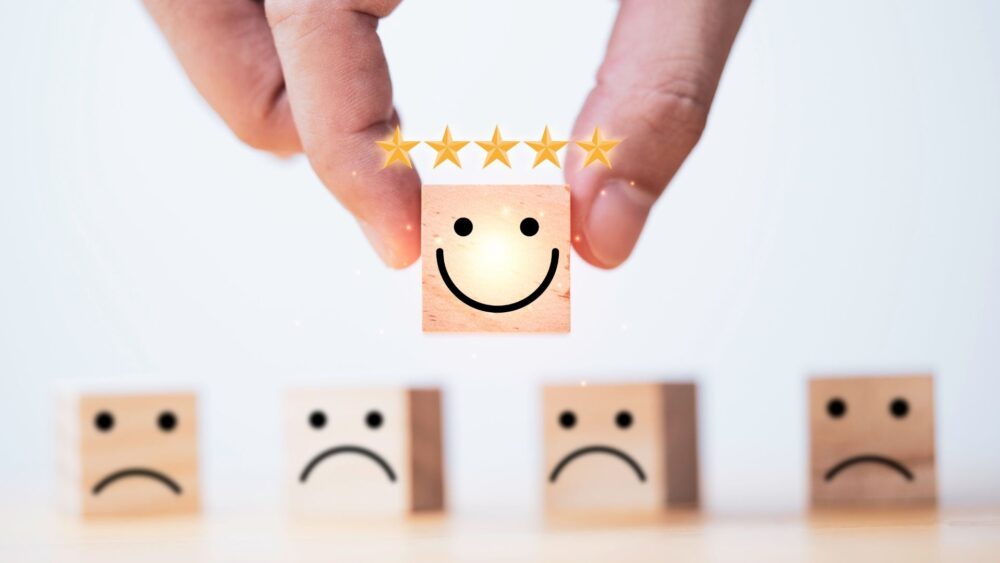If your child is online, their digital footprint is already being created, and their online reputation is being formed.
Why Digital Reputations Matter
A big part of our world is online and will continue to be so, whether it’s social connection, entertainment, inspiration, professional pursuits, or problem-solving. The first impression we make on others (and vice versa) is often online. We live in a search engine culture with information about people, things, and events readily available as long as we have Internet access. Our “digital reputation” comprises all the information available online, not just the good stuff we want people to see, and it impacts how others perceive us. There is no magical division between online and offline, and our digital reputation is not separate from our real-world reputation.
What is a Digital Reputation?
A digital reputation, or digital footprint, includes social media interactions, the content we create or share, and the various online information trails we leave. Just as our brain integrates information from different sensory systems to construct meaning, people synthesize all the information they find about us and, accurately or not, form opinions about things like trustworthiness, personality, and even popularity.
When people form opinions, however, they rely more on what they already know and believe than new information. The latest information is categorized and interpreted to fit with what’s already there, meaning people attribute traits to others based on their frame of reference and preferences. A person with social media posts about partying at college can be interpreted as fun-loving or irresponsible, depending on who’s looking.

Digital Reputations Can Be Fragile
With the continual flow of new information across platforms, it’s easy to forget that the Internet is permanent and searchable, and private can mean public. Even best friends pass on messages they shouldn’t, accounts get hacked, and companies change their privacy policies.
Despite the potential risks, a positive digital reputation has real benefits. For example, Alicia is a high school senior who uses a personal blog to display her art projects. She shares her work on various social media platforms but limits her comments to personal friends and social media scrolling to find other artists who inspire her. Through online connections, Alicia has met people with similar interests and received encouragement from more established artists. Her website is a digital portfolio that she can use when applying to colleges or showing potential employers, giving her more flexibility to promote her artwork. In fact, a digital portfolio or presence is standard practice in many fields.
By contrast, Ryan didn’t see the harm in using social media. He posted carelessly about his college activities, made less-than-judicious comments on others’ posts, and generally had fun. After college, however, Ryan applied for some internships. A quick Google search led prospective employers to see some offensive jokes posted on social media that cost him several opportunities. While Ryan thought he was being cool, he did not understand how careless online behavior can create negative impressions in the minds of those who don’t know him with real-world implications.
Why Kids Need Strategies for Reputation Management
Children and teens are particularly vulnerable to the impacts of digital reputations due to two factors: 1) their limited understanding of how the Internet and social media apps work and 2) brain maturation. Adults, however, are not always mindful of the effects of their online activities. In one study, participants reported understanding privacy issues on their social media accounts. However, they still uploaded large amounts of personal information, viewing the risks of oversharing as something that happened to others (Debatin et al., 2009).
Young brains don’t reach maturity until sometime in the mid-twenties. The prefrontal cortex is one of the last parts to develop, and it is responsible for prioritizing, planning, and making good decisions, which is part of why teens do some dumb and risky things. This developmental process also contributes to young people’s focus on the near-term social benefits of their decisions rather than longer-term consequences (NIH, 2023). FOMO and cancel culture in the rapid-fire world of social media can contribute to emotion-fueled decision-making and further limit cognitive appraisal.
Because they are works in progress, young people need specific tools and strategies to guide their decisions by decreasing reactivity and increasing thoughtful intentionality. Understanding that every online interaction – personal and any that sound thoughtless, mean, or hurtful– becomes part of their permanent public record is a first start. Still, it won’t be motivation enough in the face of teenage angst. Strategies that help teens hit the “pause button” before the “send” button are more powerful and effective.
Digital Reputations vs. Personal Brands
Despite what your young person may think, a digital reputation and a personal brand are not synonymous. In this age of Influencers with massive media coverage of the financial and social rewards of being a content creator, creating a personal brand holds allure for people of all ages. A LEGO poll reported that 30% of 3,000 U.K. and U.S. children polled wanted a career as a vlogger, far and away outpacing previous top hits like an astronaut (PR Newswire, 2019). Morning Consult (2023, September) noted that nearly three-quarters of Gen Z and Millennials want to make money by posting content online as a career.
Whatever your goals, there is a critical difference between a personal brand and a digital reputation. While they both are created online, the difference lies in intention. A personal brand is actively and intentionally crafted to showcase someone’s skills, personality, or goals. It is an intentional presentation of self to the world. By comparison, a digital reputation is the byproduct of all online activity, purposeful and unintentional, good and bad. It represents how others see you, not just how you want to see or promote yourself.
Alicia created a personal brand around her art, actively sharing content, engaging on art-related topics, and networking. However, she also has a digital reputation. If she keeps all her online activities positive, her digital reputation will support her personal brand. A few inappropriate TikTok videos, however, can undermine her reputation as responsible and professional.
6 Strategies to Helping Kids Manage Their Digital Reputations
Given the importance of maintaining a positive digital reputation, teaching children about the impact of their online behavior is one of the first lessons in digital literacy. Here are some strategies to get you started:
- Open Communication: Encourage open discussions about using social media and the Internet. Make it a regular conversation rather than a lecture, allowing children to share their experiences and concerns. Recognize that social media profiles can be an integral aspect of self-presentation to a teen’s emerging identity development, so they may be resistant and emotional about addressing the subject. The goal is to help them look at it from a perspective other than their own and consider how it might seem to others. Start by using examples of others so your child can more easily step into others’ shoes.
- Think Before You Post: Young people want to share their experiences and ideas. Self-expression is great, but what goes online stays online. Expecting consistent self-regulation from tweens and teens is unreasonable. It is a skill that you acquire over time. Providing a “rule” as standard practice can help. Just like brushing your teeth before you go to bed, the 5-question rule can become an automatic behavior that activates some critical thinking and perspective-taking and, most importantly, creates a pause between snap and post. Here are some ideas:
- Would I want everyone [at my school or in my family] to see this?
- Does this post show an authentic version of myself?
- Am I disclosing personal information, like location?
- Will anyone pictured or tagged be happy about it?
- Am I being kind?
- Privacy Settings and Security: Discuss privacy and the limitations of digital information. Privacy settings are important, but don’t stop a friend from grabbing and sharing a screenshot. Review how to use privacy settings on social media and the importance of securing their information with strong passwords.
- Education on Consequences: Talk openly about the long-term consequences of online actions. Use real-life examples to illustrate how digital footprints are permanent so your child can speculate on potential outcomes that might mess up a future opportunity. Don’t be surprised if you hear the “third person effect” (that happens to others, not me.) Don’t let that deter you. Try “But if it did…then what would you do?” or “But if it happened to your best friend, what would you tell them?”
- Monitoring and Guidance: Conduct a reputation review. Both you and your child can Google each other and discuss what you find. It’s essential to help children navigate their online presence. Building awareness is the first step, so their digital reputation is something they care about. I am not a fan of parental monitoring tools because they can undermine a child’s self-efficacy. At the same time, establishing age-appropriate boundaries and guidelines can ensure safe use and support digital reputation management. Start with a technology agreement so that all the rules, including privacy and posting behaviors, are clear and agreed on by both parties. Articulating the agreement in writing and having everyone sign avoids misunderstandings.
- Lead by Example: Parents are important role models. If you demonstrate good digital habits, your online behavior will be a powerful model for your children. Don’t hesitate to talk to them about what you’ve learned, your problems, and how you resolved them.
6 Steps for Cleaning Up a Digital Reputation
While it’s easier not to make mistakes than to clean them up, life doesn’t work like that. Experience is a great teacher. Don’t beat yourself up over what you “should have done; be glad you’re thinking about it now.
- Start kids early so they understand the concept of ‘reputation,’ and how they control it, so offline behaviors can translate later to online.
- Do an audit and delete old, unused accounts. Review and cull friends lists.
- Go through photo albums on social media accounts. Remove what you can. (Remove it, don’t hide it.)
- Address third-party content. Ask friends and family to remove things they posted. (If you are a parent who routinely shares pictures of your children online, this is a good chance to remove any that your child finds embarrassing.) Reach out to any organizations like local news or school sites and blogs with content they don’t have your permission to use. They will often respond to polite requests.
- Seek professional help from organizations like LifeBrand that use AI to find and flag potentially harmful content.
- Suppress negative content by creating positive content and being a good digital citizen.
Conclusion
Digital reputations are an integral part of our online identities. Prepare your kids for success in a connected world. Learning about digital reputations should begin as soon as a child can interact with online spaces, whether TikTok or Roblox. Managing a digital reputation is critical in safeguarding future opportunities and maintaining a positive online reputation. By fostering awareness and teaching proactive management strategies, we can be more mindful of our behaviors and help children navigate their digital worlds more wisely.
References
Debatin, B., Lovejoy, J. P., Horn, A.-K., & Hughes, B. N. (2009). Facebook and online privacy: Attitudes, behaviors, and unintended consequences. Journal of Computer-Mediated Communication, 15(1), 83-108. https://doi.org/10.1111/j.1083-6101.2009.01494.x
Morning Consult. (2023, September). How brands can succeed at influencer marketing. https://pro.morningconsult.com/analyst-reports/influencer-marketing-trends-report
NIH. (2023). The teen brain: 7 things to know. Publication No. 23-MH-8078. https://www.nimh.nih.gov/health/publications/the-teen-brain-7-things-to-know
PR Newswire. (2019). LEGO group kicks off global program to inspire the next generation of space explorers as NASA celebrates 50 years of moon landing.

 Dr. Pamela Rutledge is available to reporters for comments on the psychological and social impact of media and technology on individuals, society, organizations and brands.
Dr. Pamela Rutledge is available to reporters for comments on the psychological and social impact of media and technology on individuals, society, organizations and brands.